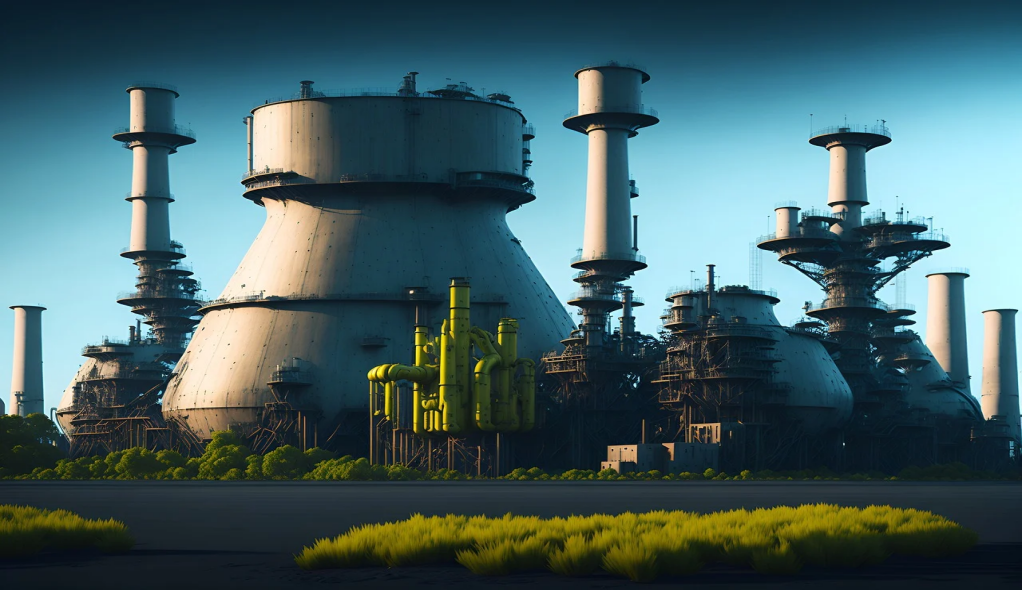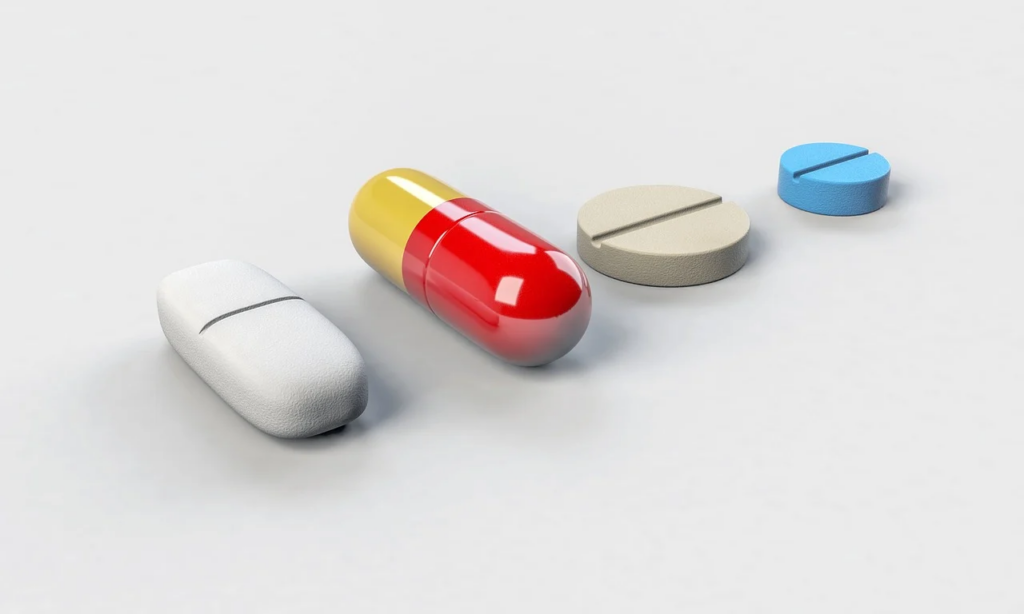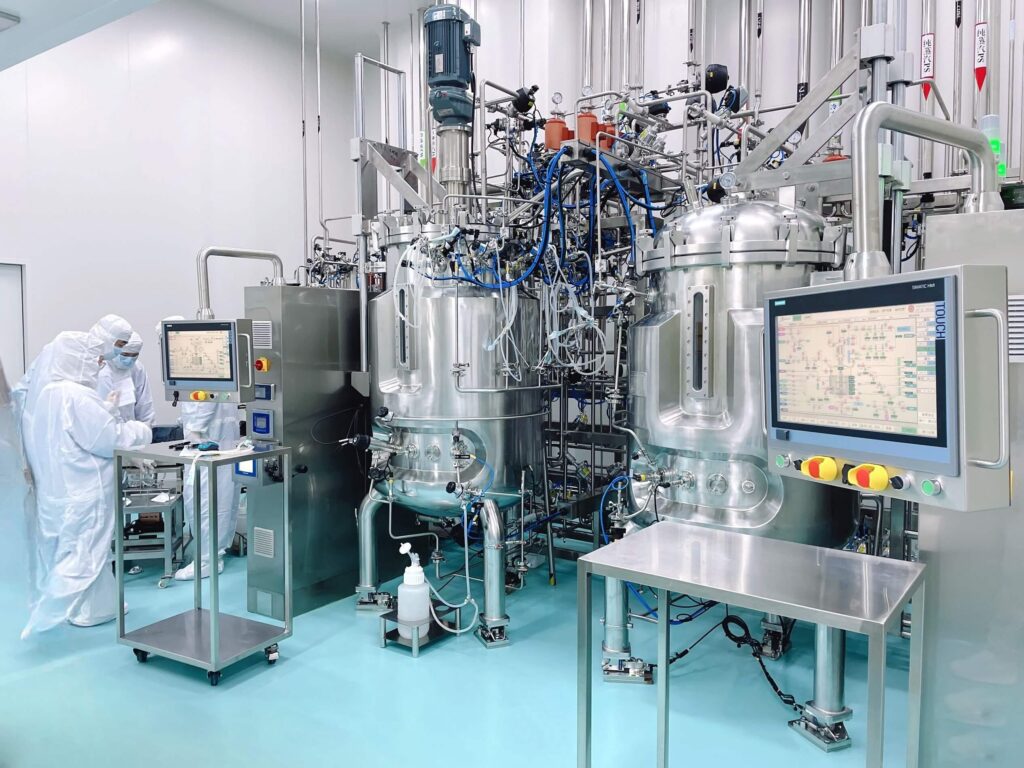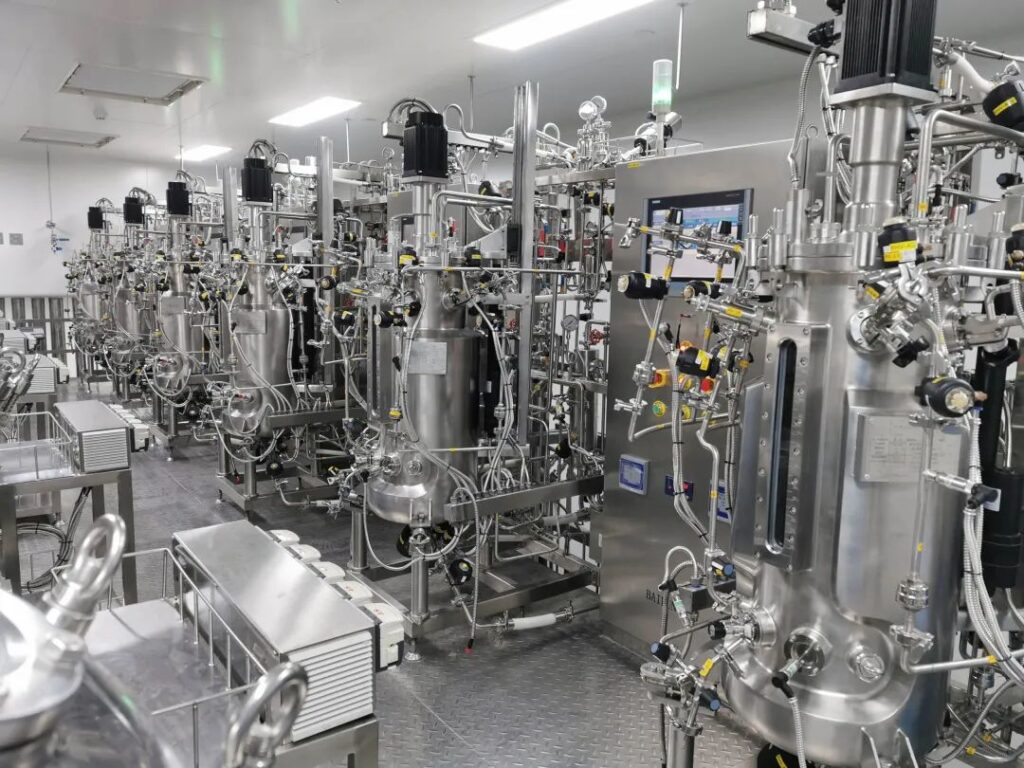
A 2019 study published in the Journal of Cleaner Production states that the pharmaceutical industry’s emissions are 55% higher than that of automobiles. These problems are made worse by the fact that many life-saving medications require complex chemicals that are costly and time-consuming to produce using traditional techniques. The pharmaceutical industry is considering biosynthesis as a possible way forward as the need for creative, long-lasting, and effective solutions increases.
Introducing Biosynthesis
What is biosynthesis, then? In simple words, biosynthesis is a natural process in which living organisms produce complex molecules like proteins, antibiotics and vitamins. It involves the use of living cells (e.g., bacteria, fungi, plants or even animal cells) to produce commercially valuable molecules in a controlled and scalable fashion.
This approach contrasts sharply with conventional chemical synthesis, where scientists build molecules from scratch via multistep chemical reactions. Despite its effectiveness, chemical synthesis is usually energy-intensive and necessitates difficult circumstances, such as high temperatures, hazardous waste, and poisonous solvents. On the other hand, biosynthesis greatly lessens the environmental impact of medical production as it takes place in mild, water-based environments. Furthermore, complex compounds that are ordinarily difficult to synthesize using conventional methods are frequently produced in greater amounts through it.
Think of insulin production – a life-saving drug for millions of diabetes patients. Originally, insulin was obtained from animal pancreas, a costly and inefficient process. However, genetically engineered bacteria are capable of producing human insulin through it in larger quantities, enhancing both availability and affordability.
Now, let’s begin with 10 game-changing applications of it within the pharmaceutical industry.
10 Applications of Biosynthesis in the Pharmaceutical Industry
1. Biosynthesis and the Production of Antibiotics
Antibiotics are a fundamental element of modern medicine. Before the discovery of antibiotics, bacterial illnesses were generally fatal.
It is a natural process that has provided us with thousands of antibiotics. Microbial biosynthesis forms the foundation of most antibiotics prescribed as therapeutic agents. Which includes penicillin, Streptomycin, and Erythromycin. For example, the biosynthetic production of penicillin is done by the fungus Penicillium, discovered by Alexander Fleming in 1928.
It not only produces natural antibiotics but also yields semi-synthetic ones. Semi-synthetic antibiotics are a slight modification of natural antibiotics. These changes enhance the medication’s ability to combat resistant germs, an issue that is becoming more widespread.
The potential market for antibiotics is enormous. And should reach $58.4 billion by 2025. Many believe in it becoming more and more crucial in the fight against antibiotic resistance.
Besides, with advanced technologies like synthetic biology, scientists may design microbes to produce novel antibiotics. In a world where antibiotic resistance may render even simple diseases fatal, these discoveries offer hope.
2. Biosynthesis in the Development of Cancer Drugs
Biosynthesis has led to breakthroughs in cancer treatment. Paclitaxel (Taxol), a crucial chemotherapy medication used for lung, ovarian, and breast cancer is among the most well-known solutions.
The Pacific yew tree’s bark was once used to make paclitaxel, but overharvesting seriously endangered the species. These days, paclitaxel is made through the scalable and sustainable biosynthesis of plant cell cultures.
In addition to offering a more environmentally considerate option to plant destruction, biosynthetic methods power changes that improve the efficacy of cancer medications. For example, doxorubicin, an anthracycline antibiotic that is essential to cancer treatment, is produced through the biosynthetic manipulation of microbes like Streptomyces.
It may also make it possible to produce personalized cancer medications suited to the distinct genetic composition of an individual. This could result in more efficient and focused treatments for cancer patients.
3. Vaccine Production via Biosynthesis
Biosynthesis has been crucial to the development of vaccines. Conventional vaccinations frequently use inactivated or weakened strains of germs or viruses. However, recombinant vaccines, which synthesize a small portion of the pathogen instead of the full microbe, are made possible by biosynthetic techniques.

A good example of biosynthetically manufactured vaccines is the hepatitis B vaccine, which is manufactured in yeast cells. The primers for the vaccine are gene sequences that, when inserted into specific sites within the yeast cells, enable scientists to mass produce the proteins required to synthesize the hepatitis B surface antigen. This process has helped prevent millions of hepatitis B infections all over the world.
The significance of it in vaccine production is perhaps best demonstrated by the development of COVID-19 vaccines. The Pfizer-BioNTech and Moderna vaccines both depend on messenger RNA, which is biosynthesized to provoke an immune response. Mass production and quick distribution of vaccines saved numerous lives during the pandemic.
4. Biosynthesis of Insulin for Diabetes Treatment
Diabetes, a disease that insulin controls affects over 537 million people around the globe. Insulin was taken from the pancreas of animals such as cows and pigs before biosynthesis. Besides being costly and time-consuming, this procedure carried the risk of contamination and complications in the form of allergic reactions.
With the advent of recombinant DNA technology in the 1980s, bacteria like Escherichia coli were first employed to produce human insulin, revolutionizing the process of insulin production. This knowledge enabled pharmaceutical companies to produce massive amounts of insulin by inserting the human insulin gene into bacterial DNA, consequently providing millions of diabetics with a more stable, dependable and less expensive source of insulin.
By 2025, the worldwide insulin market is projected to grow to over $30 billion, with biosynthetic insulin holding a dominant position. Additional advancements like insulin pumps and long-acting insulin analogues have also been made possible via biosynthesis, improving the lives of diabetics.
5. Biosynthetic Hormones and Biopharmaceuticals
Hormones control nearly all the activities of the human body, including growth, chemical activities, and emotions. Before recombinant biosynthesis, biological products such as human growth hormone (hGH) were derived from natural products, posing numerous risks for the acquisition of diseases such as Creutzfeldt-Jakob disease.
These days, recombinant DNA technology facilitates the biosynthetic development of hGH, offering a plentiful and safe source of the hormone. By 2027, the global hGH market is anticipated to have grown from its 2021 valuation of $4.6 billion to $8.5 billion. Other essential hormones, such as follicle-stimulating hormone (used in fertility therapies) and erythropoietin (used to treat anaemia), are produced similarly to hGH.
6. Biosynthesis of Vitamins and Supplements
Microbial biosynthesis is central to vitamin production. One critical bacterium in the production process is Pseudomonas denitrificans, which biosynthesizes vitamin B12, an essential component for nerve and brain function, as well as the production of red blood cells.
Essentially, it offers a sustainable substitute for synthetic chemical processes, which are often energy-intensive and environmentally harmful. For example, a two-step fermentation technique employing genetically modified bacteria is used to make biosynthetic vitamin C (ascorbic acid). This approach is more effective and environmentally benign than standard chemical synthesis.
Biosynthetically made vitamins have a sizable market, and by 2028, the worldwide vitamin and supplement market is expected to grow to $196 billion. The manufacture of vitamins and nutritional supplements will depend more and more on biosynthesis as consumer demand for sustainable and healthy products rises.
7. Monoclonal Antibodies and Biosynthesis
One of the most significant advancements in modern medicine is the application of monoclonal antibodies, especially in treating bacterial and viral infections, autoimmune disorders and in the treatment of cancer. It has a significant role in synthesizing the proteins meant to bind and eliminate certain foreign agents within the body.
Chinese Hamster Ovary(CHO) cells are the commonly employed mammalian cell lines for the biosynthesis of monoclonal antibodies (mAbs) to produce the antibodies on a large scale. it is used by pharmaceutical companies to achieve the best synthesis process and to produce highly selective and productive antibodies.
Rituximab is one of the best examples of biosynthetic monoclonal antibodies used in the treatment of leukaemia and lymphoma. The monoclonal antibody industry was projected to be worth $163 billion in the year 2022, and will be around $345 billion by the year 2030. The field of pharmacologics will remain an active area of research owing to changes in biosynthesis techniques.
8. Biosynthesis in Statin Production
Statins, the drugs used to lower cholesterol levels, are among the most consumed medications globally. These medications decrease the possibility of developing heart disease, the leading cause of death in the world today. They achieve this by blocking an enzyme that is involved in cholesterol production.
Lovastatin, one of the first statins, is biosynthesized from the fungus Aspergillus terreus. Thanks to biosynthesis, large-scale production of statins in pharmaceutical companies is possible, ensuring a reliable and constant supply. Several biosynthetic statins, including atorvastatin and simvastatin, have also been developed and are now widely used in therapy.
The statin market was estimated at a value of $14.3 billion in 2020, and it is still expanding as heart disease remains a serious concern. Biosynthesis helps to maintain availability of these drugs for millions of people who require them.
9. Green Chemistry: Sustainability in Drug Manufacturing
As sustainability in drug manufacturing gains global attention, the pharmaceutical industry is looking for ways to reduce its environmental impact. Biosynthesis offers a solution through green chemistry, which seeks to eliminate waste and the use of harmful chemicals in the manufacturing of medicines.
A notable success of green chemistry is producing the effective anti-malarial drug, artemisinin. Artemisinin is derived from the sweet wormwood plant through extraction, a time-consuming and resource-intensive procedure. Today, scientists have genetically modified yeast to produce artemisinin using biosynthetic techniques, providing a more efficient and environmentally friendly approach to producing this life-saving medication.
Apart from minimizing the negative effects of the drug development on the environment, biosynthesis drives the the supply and thus availability of these important medicines. Pharmaceutical business is currently improving green chemistry, and biosynthesis is at the center of this drive.
10. Biosynthesis in Personalized Medicine
Personalized medicine is the way of the future, and biosynthesis will be crucial to achieving this objective Biosynthetic techniques are used in gene therapy and personalized vaccinations to develop customized treatments for each patient.
For example, gene therapy employs biosynthesis in the production of viral vectors which treats diseases caused by genetics disorders by effectively inserting specific genetic material into a patient’s body. Vaccines are also being developed through biosynthetic techniques in order to immunologically predispose the body to attack certain tumors.
Biosynthesis will contribute immensely to the growth of the global market for personalized medicine which is expected to be worth $796 billion by 2028. This approach has the potential to revolutionize medicine by providing more effective and less toxic treatments for patients.
Why Biosynthesis Matters More Than Ever
As global health issues such as antibiotic resistance, sustainable production of medicine, and individualized therapy gain importance, biosynthesis provides remedies that regular chemical synthesis cannot offer. Here is why:
- Sustainability: Most of the conventional chemical procedures yield significant amounts of waste and usually incorporate highly corrosive chemicals that lead to environmental risks: However, biosynthesis is a more natural and efficient way that uses natural organisms to synthesize molecules from scratch.
- Efficiency and Scalability: Some of the organic compounds which are potentially hard or impossible to synthesize through ordinary chemistry can now be synthesized through biosynthesis. It is also possible for pharmaceutical corporations to manufacture drugs on a large scale using microbes or plant tissues to meet the growing global need.
- Tackling Resistance to Antibiotics: Due to the development of antibiotic-resistant bacteria, The concept of biosynthesis is utilized in the process of creating new antibiotics or modifying them. Synthetic biology makes it possible to effectively program microbes that produce new drugs to combat resistant strains.
- Innovation in Drug Development: Employing biosynthesis, new medicinal molecules, gene therapies, biologics, and monoclonal antibodies can be synthesized. Overall, biosynthesis opens new horizons in the treatment of diseases including cancer, autoimmune diseases and genetic disorders.
- Cost-effective production: Biosynthesis reduces the cost of developing complex molecules for various processes.
For these reasons, biosynthesis is steadily becoming a more widespread concept among the key processes in modern pharmaceutical drug production.
The Future of Biosynthesis in Pharmaceuticals
Over the last few years, new techniques like precision fermentation, CRISPR for gene modification and synthetic biology have turned biosynthesis into a revolutionary process in therapeutic discovery. The use of these technologies gives the capacity to accurately control microbiological agents to produce drugs that save lives more easily.

Larger organizations, like the BaiLun Biotechnology Company, provide bioreactors or GMP-certified biomass producers to support OSVs.These resources make even the most complex biosynthetic processes—such as those needed to produce vaccines, biologics, and other valuable products—more accessible.
Genetic modifications using CRISPR allow the bacteria to produce complex compounds that would otherwise be hard to produce using traditional techniques. Therefore, precision fermentation can generate high yields of molecules such as insulin or monoclonal antibodies.
Moreover, biosynthesis promises more evolutionary advancements in personalized treatment. Microbial strains that may be created or built using AI might eventually be used to biosynthesize targeted medicines. This possibility raises the hopes of obtaining specialized drugs for rare diseases.
In addition to optimizing resource use and chemical disposal, biosynthesis not only improves healthcare but also promotes environmental sustainability. To compensate for biologics demand and ensure constant production, pharmaceutical firms are employing bioreactors as they have a low impact on the environment.
Biosynthesis offers enormous promise for sustainable production methods that can also be used to rapidly generate safer and more effective drugs. The companies adopting this technology early and taking advantage of next-gen devices like BaiLun’s smart fermenters will be well-positioned to lead the next pharmaceutical revolution.
Conclusion
Beyond merely being a means of producing drugs, biosynthesis is a transformative force influencing the direction of the pharmaceutical sector. Biosynthesis has already revolutionized modern medicine by producing cancer-fighting and life-saving medications. Biosynthesis will spur more advancements as research opens up new avenues, especially in green chemistry, personalized medicine, and sustainable medication manufacturing.
The world pharmaceutical market is expected to grow to $1.57 trillion by 2026! Biosynthesis will only become more and more critical. In addition to providing sustainable and cost-effective alternatives for drug production, biosynthesis presents new possibilities in curative approaches utilizing nature as its ultimate toolkit.
Take Your Vaccine Production to the Next Level with BaiLun’s GMP Vaccine Bioreactors!
Unleash the power of biosynthesis with the state-of-the-art Vaccine Bioreactor (GMP) from BaiLum Biotechnology. Its flawless engineering for accurate, large-scale vaccine production ensures constant quality and adherence to international pharmaceutical standards. Whether creating vaccines or other medical solutions, this bioreactor ensures scalability and efficiency.
Explore the Vaccine Bioreactor and discover how it’s shaping the future of biosynthetic pharmaceutical manufacturing. For further inquiries and orders, contact us today.

